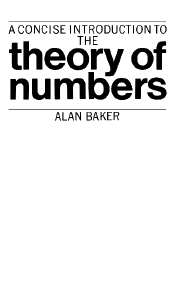6 - Diophantine approximation
Published online by Cambridge University Press: 05 June 2012
Summary
Dirichlet's theorem
Diophantine approximation is concerned with the solubility of inequalities in integers. The simplest result in this field was obtained by Dirichlet in 1842. He showed that, for any real θ and any integer Q > 1 there exist integers p, q with 0 < q < Q such that |qθ − p| ≤ 1/Q.
The result can be derived at once from the so-called ‘box’ or ‘pigeon-hole’ principle. This asserts that if there are n holes containing n + 1 pigeons then there must be at least two pigeons in some hole. Consider in fact the Q + 1 numbers 0, 1, {θ}, {2θ}, …, {(Q − 1)θ}, where {x} denotes the fractional part of x as in Chapter 2. These numbers all lie in the interval [0, 1], and if one divides the latter, as clearly one can, into Q disjoint sub-intervals, each of length 1/Q, then it follows that two of the Q + 1 numbers must lie in one of the Q sub-intervals. The difference between the two numbers has the form qθ − p, where p, q are integers with 0 < q < Q, and we have |qθ − p| ≤ 1/Q, as required.
Dirichlet's theorem holds more generally for any real Q > 1; the result for non-integral Q follows from the theorem just established with Q replaced by [Q] + 1. Further it is clear that the integers p, q referred to in the theorem can be chosen to be relatively prime.
- Type
- Chapter
- Information
- A Concise Introduction to the Theory of Numbers , pp. 43 - 60Publisher: Cambridge University PressPrint publication year: 1984



